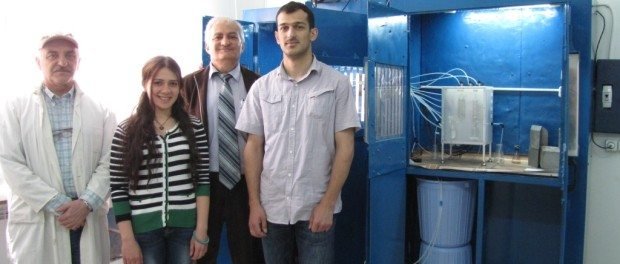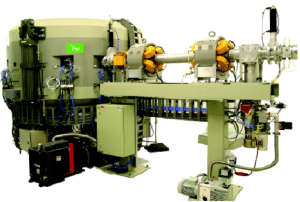YEREVAN—The International Atomic Energy Agency (IAEA) recently indicated its support for the “Technetium 99m Medical Isotope Production Project” at the newly formed Medical Isotope Production Division of the Yerevan Physics Institute (YerPhI). The research and production program will use an 18 MeV (million electron-volt) proton beam of an IBAC18 cyclotron particle accelerator to be installed at a newly renovated facility of the physics institute by the end of 2014. The Technetium is produced by irradiating Molybdenum with a proton beam from the cyclotron.


Technetium (99mTe) is the most widely used isotope for medical imaging today, with more than 30 million diagnostic medical imaging scans every year worldwide. When injected into patients, it produces radiation similar to X-rays, which are used to image internal organs. This isotope has a half-life of six hours, meaning that half of the remaining isotope decays every six hours. Thus, 94 percent of the Technetium injected into a patient decays within 24 hours, resulting in minimal radiation exposure. Exposure is about the same as from an X-ray.

According to the Scientific Center of Radiation Medicine and Burns at the Armenian Ministry of Health, the need in Armenia for the isotope 99mTe is 5,000 doses per year. Due to its rapid decay, and the fact that it must be shipped from abroad, there is only enough to treat 1,000 patients per year. Thus, 80 percent of Armenian patients have no access to this medical imaging technology, and there is a need for a non-stop supply of 99mTe.
The goal of the Isotope Production Division of the Yerevan Physics Institute is to develop the technology of direct 99mTe production to cover the need of Armenian clinics and their patients. Senior scientists at the Yerevan Physics Institute, together with recent physics and engineering graduates and graduate students, are preparing the facilities for the manufacture, purification, and testing of this isotope in a newly equipped laboratory at the institute’s facilities in Yerevan. Special efforts are being implemented to assure quality and safety. This project is one of many bringing the benefits of science to the Armenian public.





Great to see science, medical and engineering investments such as this in Armenia.